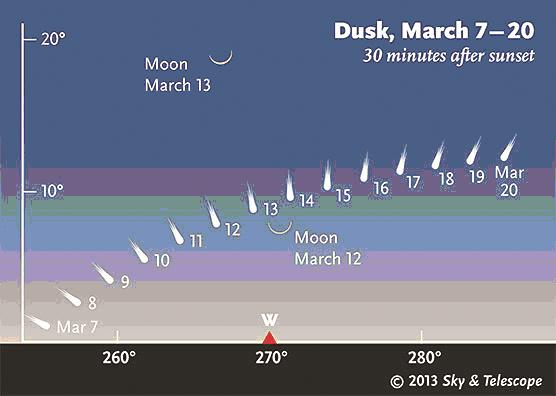News From the Bilkent Astronomy Society: Comet PANSTARRS Approaching
Watch out! A long-awaited comet, C/2011 L4 (PANSTARRS), was at its closest distance to the sun on March 10, and is now observable with the naked eye in the Northern Hemisphere.
The comet can be observed half an hour after the sun sets throughout March. However, at the time it is observable, both because the comet is faint and the sky is not dark, it may be hard to spot, so small binoculars are recommended (but not necessary). The chart above shows where to find PANSTARRS. Remember, the sun sets at 5:47 p.m. on March 12. On the altitude scale on the left, 10° is about the width of your fist, held at arm's length.
What's more, the passage of a second -- and spectacular -- comet will occur in November. If the predictions come true, C/2012 S1 (ISON) will be as bright as the full moon in November, and will be observable even in daylight!
